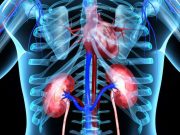Tag: Atrial Fibrillation
Vast Majority of Atrial Fibrillation Ablation Procedures Successful
Furthermore, new national registry data show rates of complications low
Accelerated Pacing Improves Quality of Life in HFpEF Patients
Improvement seen in health-related quality of life, NT-proBNP levels, activity levels, and device-detected atrial fibrillation
Reduced eGFR Linked to Increased Mortality in A-Fib
Moderately-to-severely decreased eGFR had significant effect on all-cause mortality specifically in those with low socioeconomic status
Left Atrial Reservoir Strain Plus CHA₂DS₂-VASc Ups Stroke Prediction
Addition of left atrial reservoir strain also yields predicted net benefit in people without prior a-fib or stroke
Atrial Fibrillation Screening Program Cost-Effective in Elderly
Program was cost-effective in 99.2 percent of simulations, cost-saving in 92.7 percent of simulations
GI Bleeding Lower With Apixaban Versus Other DOACs in A-Fib
No substantial differences seen for other outcomes or for other direct oral anticoagulant comparisons
BMI in Young Males Linked to A-Fib Risk, Outcomes
For those diagnosed with atrial fibrillation, hazard ratios for all-cause mortality, incident heart failure, ischemic stroke increased with higher BMI
Methamphetamines, Opiates, Cocaine, Cannabis Up Risk for A-Fib
Methamphetamine, cocaine, opiate, and cannabis exposure each associated with increased incidence of AF
Apixaban Compared to Rivaroxaban for A-Fib and Valvular Heart Disease
Risks for ischemic stroke or systemic embolism, bleeding reduced with apixaban versus rivaroxaban for atrial fibrillation and valvular heart disease
ECG Anomalies May Affect Accuracy of Smartwatch A-Fib Diagnosis
Nondiagnostic tracings and false positives seen with smartwatch algorithm detection of AF in those with cardiac anomalies














